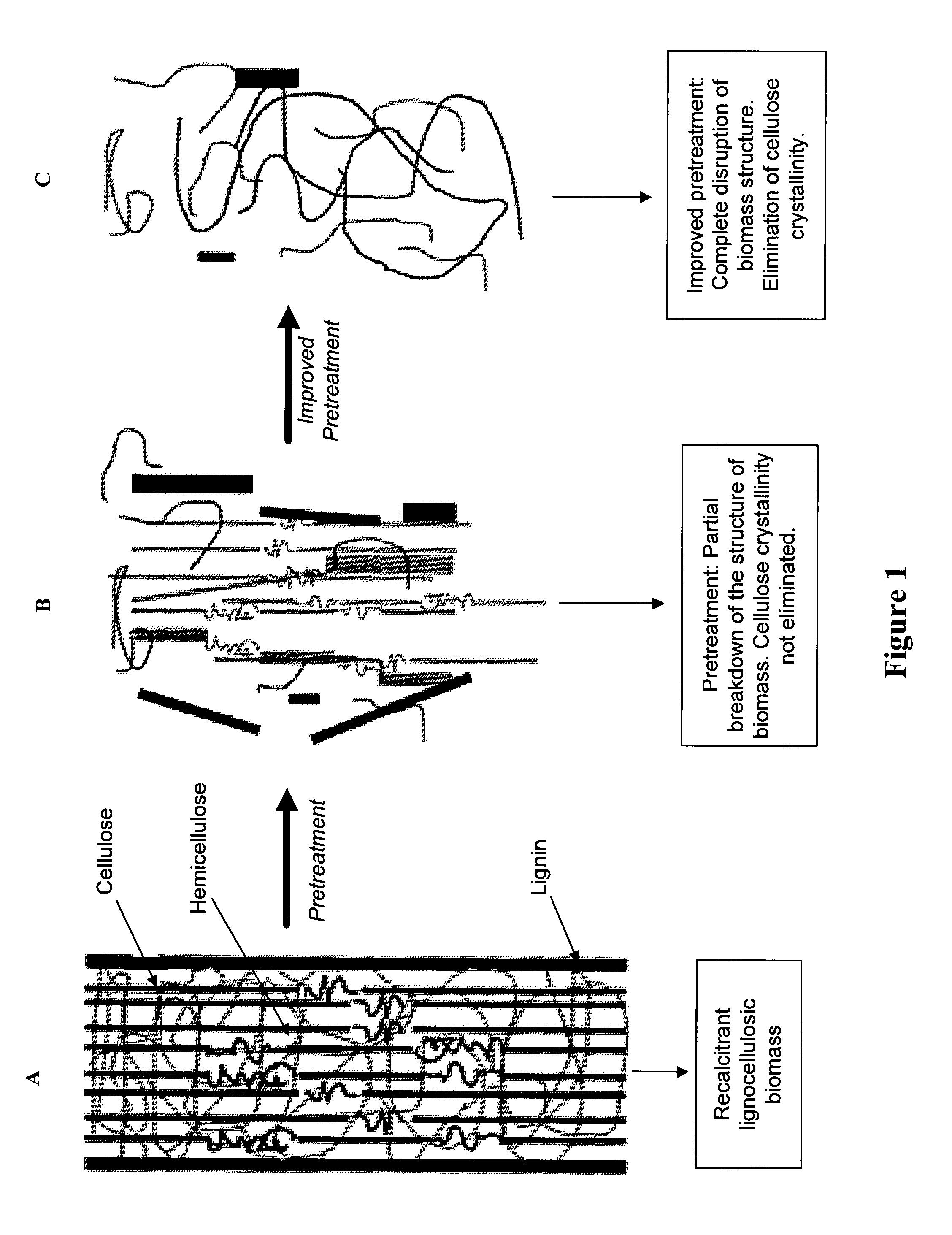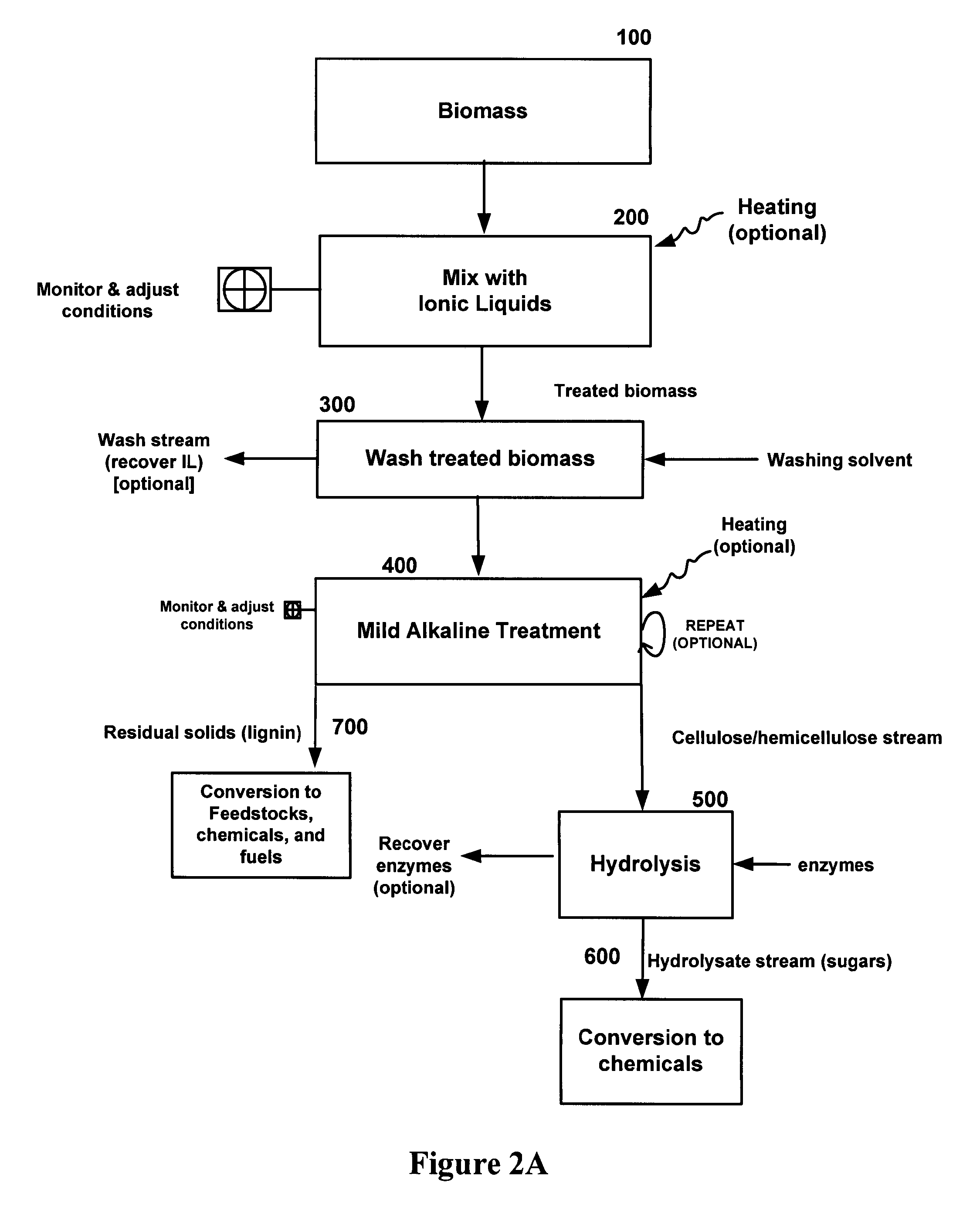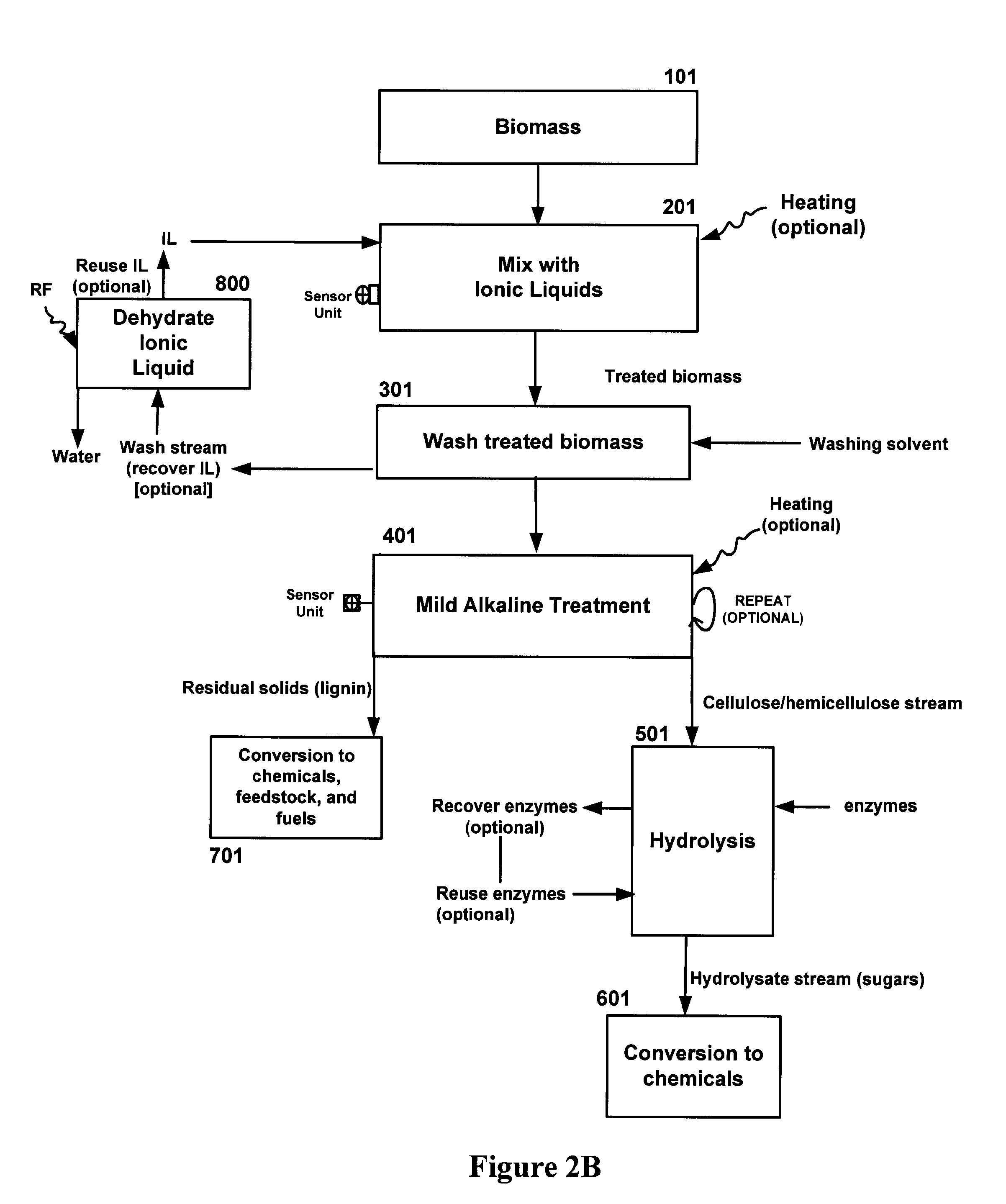Pretreatment and fractionation of lignocellulosic biomass
a technology of lignocellulosic biomass and pretreatment, which is applied in the direction of lignin derivatives, pulp liquor regeneration, glucose production, etc., can solve the problems of slow reaction rate of cellulose hydrolysis, difficult degradation of biomass, and limited practical means of producing chemicals and fuels from lignocellulosic biomass, etc., to achieve high biomass level, high solids loading, and high solids loading
- Summary
- Abstract
- Description
- Claims
- Application Information
AI Technical Summary
Benefits of technology
Problems solved by technology
Method used
Image
Examples
example 1
Treatment of Wheatstraw
[0165]Wheatstraw was comminuted and then subjected to 25% ionic liquid pretreatment for about 2.15 hours. The pretreated wheatstraw was then divided in two groups, the first group then underwent no further treatment before about 2.5 hours of enzymatic hydrolysis and the second group underwent mild alkaline treatment at 5% sodium hydroxide for about 1 hour at about 75° C. The results are shown in Table 1.
TABLE 1Wheatstraw IL pretreatment with and without mild alkaline treatment.Hydrolysis TimeHydrolysis TimeIonic liquid (hours)(hours)pretreatmentCaustic%613BiomassConditionConditionsEnzymes% Glucan% Xylan% Glucan% XylanWheatstraw 25% PT WSNone2.5442649302.15 hoursWheatstraw 25% PT WS75 C. 1 hour,2.5813684382.15 hours 5% C. Treat
[0166]The combination of the ionic liquid pretreatment and mild alkaline treatment surprisingly improved the yield of glucan and xylan from wheatstraw (lignocellulosic biomass) in a shorter period of time. Thus, the combination of the ion...
example 2
Comparison of Wheatstraw Treatment with and without Pretreatment and / or Alkaline Treatment
[0167]Wheatstraw was comminuted and then divided into two groups. One group of wheatstraw was subjected to 25% ionic liquid pretreatment for about 2.15 hours and the other received no pretreatment. The pretreated and not-pretreated wheatstraw was then divided in two groups, the first group then underwent mild alkaline treatment with sodium hydroxide for about 1 hour at about 75° C. for about 15 minutes at about 50° C. All of the groups underwent either x enzyme or 2× enzyme hydrolysis. The results are shown in Table 2.
TABLE 2Wheatstraw Processing with and without IL pretreatment and / or mild alkalinetreatment.Hydrolysis TimeHydrolysis TimeHydrolysis Time(hours)(hours)(hours)Ionic61324liquid%%%%%%%BiomassPT?Conditioning EnzymesHydrolysisGlucanXylanGlucanXylanGlucanXylanWheatstrawYes75 C. 1 hr, C.x5.5704890629667WheatstrawYes75 C. 1 hr, C.x5.575519565WheatstrawYes50 C., 15 min2x 5.58469987910386Wh...
example 3
Comparison of Wheatstraw Treatment with and without Pretreatment and / or Alkaline Treatment
[0169]Enzymatic hydrolysis results of wheat straw biomass after 13 hours of hydrolysis at 2× Enzyme dosage. Four conditions were compared: (1) Ionic liquid pretreatment of wheatstraw with mild alkaline processing at 75° C. 1 hour, (2) Ionic liquid pretreatment of wheatstraw alone, (3) mild alkaline processing at 75° C. 1 hour with no ionic liquid pretreatment and (4) untreated wheat straw. These four conditions were compared for the percentage of glycan and xylan conversion to monomeric sugars. See FIG. 4. Thus, either the ionic liquid pretreatment or mild alkaline treatment may improve the yield of monomeric sugars. However, the combination of both the ionic liquid pretreatment and mild alkaline treatment showed a greater than additive effect in the yield of monomeric sugars from hydrolysis. Further, the pretreatment and mild alkaline treatment processing time is measured in a matter of minute...
PUM
| Property | Measurement | Unit |
|---|---|---|
| temperature | aaaaa | aaaaa |
| temperature | aaaaa | aaaaa |
| temperature | aaaaa | aaaaa |
Abstract
Description
Claims
Application Information
 Login to View More
Login to View More - R&D
- Intellectual Property
- Life Sciences
- Materials
- Tech Scout
- Unparalleled Data Quality
- Higher Quality Content
- 60% Fewer Hallucinations
Browse by: Latest US Patents, China's latest patents, Technical Efficacy Thesaurus, Application Domain, Technology Topic, Popular Technical Reports.
© 2025 PatSnap. All rights reserved.Legal|Privacy policy|Modern Slavery Act Transparency Statement|Sitemap|About US| Contact US: help@patsnap.com



